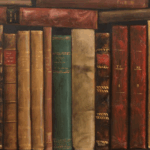It is hard to imagine what medicine and health looked like a thousand years ago before the discovery of medicines like antibiotics was invented and before the regular use of soap was a thing.
But while the Vikings may not have had our modern scientific medical knowledge, they developed some sophisticated and effective ways to treat injuries and ailments.
While the Vikings did not leave behind any medical treatises, accounts in sagas and the discovery of non-native medicinal plants found in graves hint at the use of herbalism in Viking medicine and which botanicals were most important in a Viking healer’s toolkit.
Long-Lived and Healthy

We know that Viking medicine was relatively effective because the Vikings were long-lived and healthy.
While the average life expectancy of Vikings was 35 years old, this was because infant and childhood mortality were very high, as was common in the ancient world.
Once a Viking got past the perilous childhood and adolescent years, they could expect to live to be 50-60 years old.
Many even lived into their 80s.
They could also expect to be pretty healthy. Of the 40 or so Viking warriors found in the Salme ship burials in Estonia, many were in their late 40s, suggesting that they were veterans who hadn’t lost any of their strength and agility to age.
Evidence of healed battle wounds also suggests that they had access to effective medical care, at least in their cases.
The Vikings were also big and strong. Some of the bodies from the Estonian burial were over six feet tall.
This was at a time when the average man in Britain or France was only about 5’5”.
The Vikings were an average of 5’10”, making them virtual giants. Scientists believe that this was mostly down to diet, as the Vikings had a protein-heavy diet from childhood based principally on animal protein and fish.
This is while their smaller neighbors were farmers living off a diet of mostly carbohydrates.
But access to relatively good medical treatment would also have played a role in their health and longevity.
Viking Healers
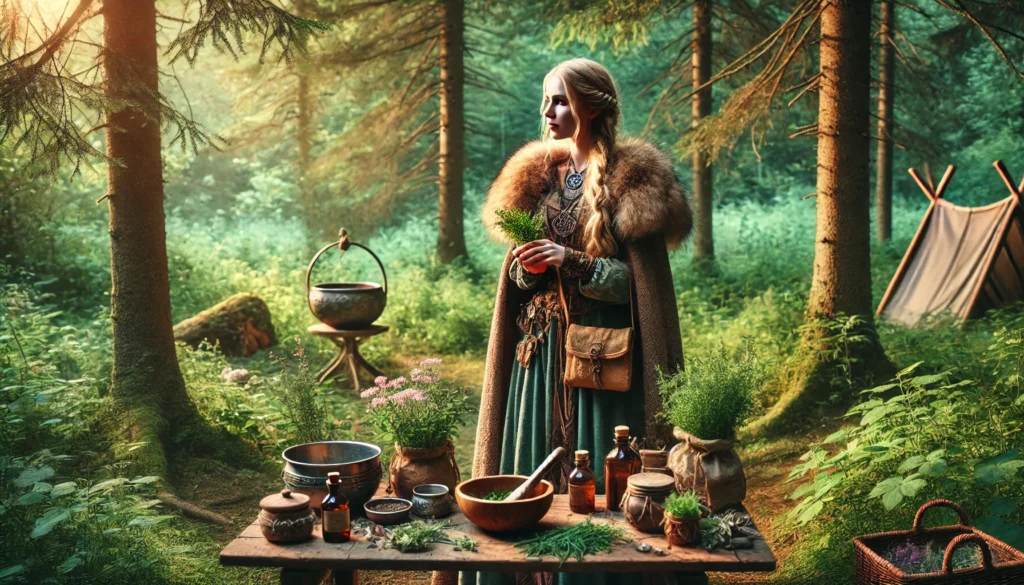
Healing seems mainly to have been the domain of women in the Vikings age.
This probably grew out of the midwife tradition, with these essential health practitioners gaining increasing knowledge through experience and then passing it on to their apprentices.
This means that Viking medicine may have been different from modern medicine in an important way.
It may have been primarily based on women’s bodies, while women only started to be included in modern clinical medicine research in 1986.
Even the contraceptive pill was tested on men.
The medical care provided by these women does seem to have blurred the lines between science and mysticism, and herbal remedies were often accompanied by rituals believed to contribute to the effectiveness of the treatment.
For example, offerings were often made to the goddess Freyja to help during childbirth.
Herbal Remedies
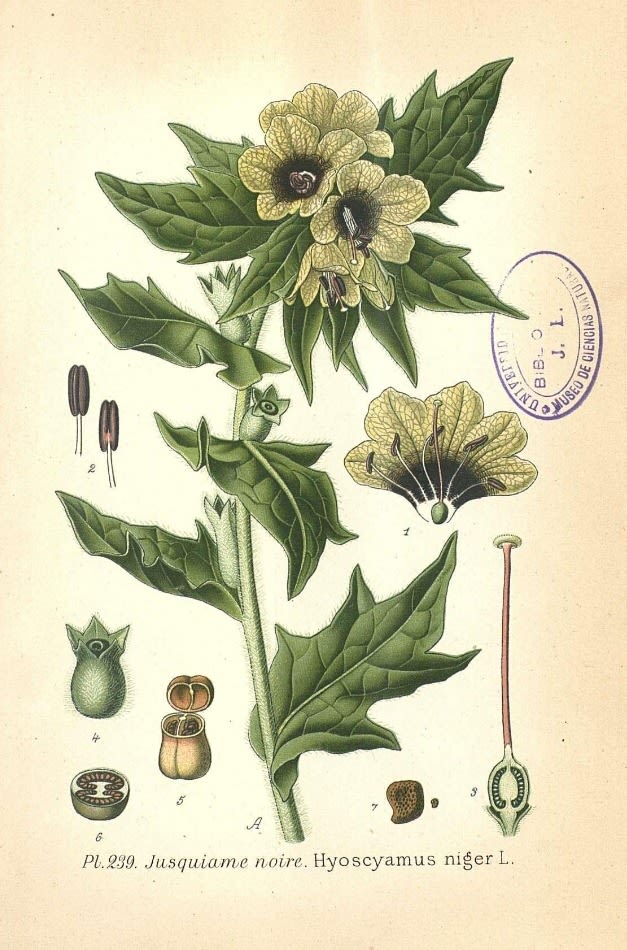
We know from archaeological remains and surviving stories some of the herbs that were commonly used as medicine in the Vikings age.
- Chamomile: was probably used to treat swelling and fevers, and it is still used today for inflammation and rheumatic pain.
- Nettles: could have been offered for joint pain, and it is still used for muscle and joint pain and to treat arthritis today.
- Yarrow: was probably used to staunch bleeding and treat wounds.
- Mugwort: was likely given for digestive issues and minor aches and pains.
- Plantain: has antiseptic properties and might have been used for cuts and open wounds.
- Cherry gourd: was probably used as a remedy for gout and also to soothe sore feet.
- Marshmallow: was imported from the Caspian Sea region and could have been used to treat headache and fever.
- Celery: was imported from East Asia and likely used for treating gout and blood purification.
We also know that the Vikings cultivated hemp, as seeds have been found at a gravesite in Sweden.
It was probably used to treat pain. Toxic henbane has also been found in a Norwegian grave, and it is hallucinogenic.
This grave seems to have belonged to a Volva, a Viking witch, and she may have used it to reach a certain state of consciousness to conduct her magic, but it may also have been used as an anesthetic for serious injuries.
Herbs could also be used in diagnosis. In the Heimskringla, a battlefield nurse gives a wounded soldier a strong leek soup.
She tells him that if she can still smell the soup after he has eaten it, the wounds have penetrated his stomach, and he can’t be saved.
Medicine and Magic
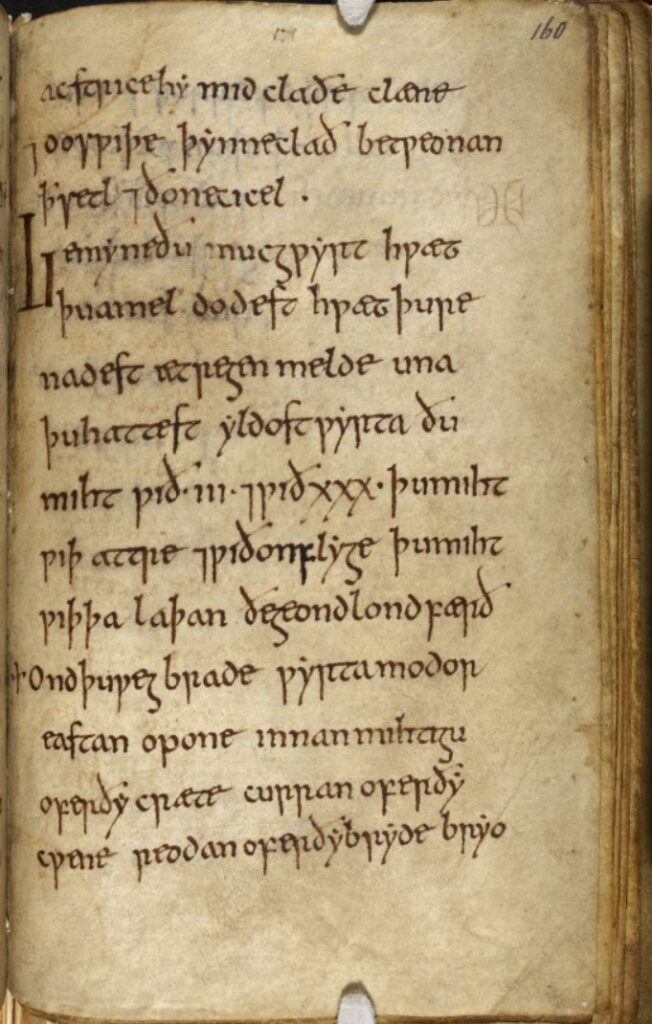
The application of herbal remedies for healing seems to have been considered both medicine and magic.
An example of this can be seen in an old English incantation called “Nigon Wyrta Galdor”, which means “Nine Herb Charm” (Harley MS 585 f. 160r-163r).
It describes preparing nine herbs for general healing purposes, including booth infection and wounds.
Below is a modern English translation of the beginning of the text describing the herbs and also referencing Wodin, the old German name for Odin.
He is associated with the sharing of this healing knowledge.
Remember, Mugwort, what you brought to pass, what you readied, at Regenmeld. You’re called Una, that most ancient plant. You defeat three, you defeat thirty, you defeat venom, you defeat air-illness; you defeat the horror who stalks the land.
And you, Waybread, plant-mother! You’re open to the east, yet mighty within: Carts creaked over you, women rode over you, over you, brides bellowed, over you bulls snorted! You withstood it all—and you pushed back: You withstood venom, you withstood air-illness, you withstood the horror who travels over land.
Now, this plant is called Stune (Lamb’s cress), she who grows on stone: She defeats venom, she grinds away pain. She’s called Stithe, she who withstands venom; she chases away malice, casts out pain. This is the plant that fought against the wyrm. She is mighty against venom, she is mighty against air-illness; she is mighty against the horror who travels over land.
You, Venom-loathe, go now! The less from the great, the great from the less, until for both he receives a remedy.
Remember, Chamomile, what you brought to pass, what you accomplished, at Alorford, that no one should lose their life to disease, since for him Chamomile was prepared.
Finally, this plant is known as Wergulu (nettle), who a seal sent over sea-ridges, to aid against venom.
These nine plants defeat nine venoms!
A wyrm came slithering, and yet he killed no one, for wise Wōden took nine glory-twigs
and smote the serpent, who flew into nine parts!
There, apple overcame venom: There, the wyrm would never find shelter.
Fille and Fennel, a most mighty pair! The wise lord shaped these plants, while he, holy, hung in the heavens, he sent them from the seven worlds, seven ages of man,
for wretched and wealthy alike. She stands against pain, she stands against venom, she is potent against three and against thirty, against a foe’s hand, against great guile, against malice and bewitchment from animal and spirit.
The reference to Odin using “glory twigs” might be a reference to Odin using healing runes, suggesting that rune magic was also used alongside healing herbs.
The reference to a serpent suggests that it is the source of many ailments.
This may relate to the story of Odin throwing the serpent Jormungandr into the sea surrounding Midgard, banishing its venomous threat.
The Power of Leeks

Herbs and plants were so fundamental to the Viking approach to healing that they are also mentioned in this capacity in Norse mythology.
Specifically, when the Vanir gods killed Mimir and sent his head to Odin, the good is described as using various herbs to preserve Mimir’s head before chanting a spell to reanimate it.
Odin’s herbal concoction almost certainly included leeks.
This is based on another story from Norse myth in which a woman is described following a similar ritual to reanimate a horse’s penis.
She is described as carefully drying the severed member and then wrapping it in linen cloth with leeks and other herbs.
She then chanted a galdr, a spell or incantation, to revive the object.
While linen and leeks seem like fairly mundane objects, the Vikings clearly learned of their healing power, which led to a belief that they could have magical properties.
A runic inscription from a grave dating to the 400s reads “linen leek wealth” as a kind of invocation. Could this inscription have been for a healer?
Leeks are also commonly mentioned in magical charms in the sagas, especially those conducted for virility.
In one story, a man dreams of leeks growing from his knees, and this is interpreted as suggesting he will have children.
There are also examples of ornamental medallions inscribed with the unlikely word leek, accompanied by images of men and horses.
However, before you start boosting your leek intake, it is uncertain what the Vikings were referring to with the team leek, laukr.
It could have been a general term for wild onions and garlic in general.
The Protection of Linen
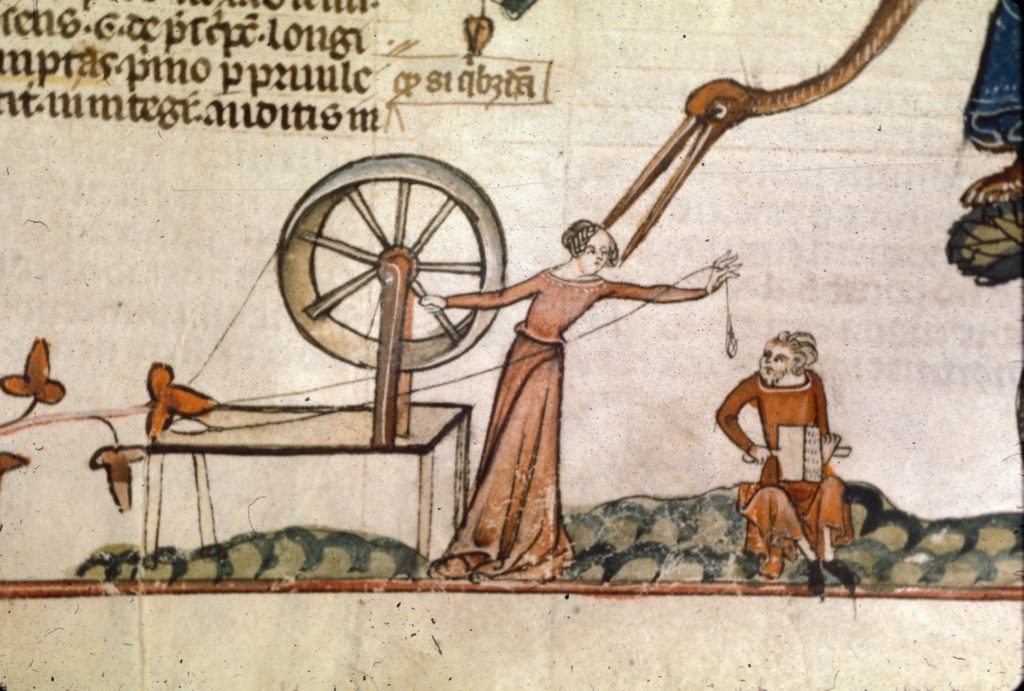
The linen that accompanied the leeks should not be overlooked.
The goddess Holda taught mankind how to make flax into linen, not unlike how Odin taught them the secrets of the magical runes.
The fabric was valued because it was thin and fine compared to other fabrics made from animal materials at the time such as wool and leather.
Flax also seems to have been believed to have magical properties.
No one could work evil magic in a flax field, and women would often use flaxseeds to appear more beautiful and attract good fortune.
The goddess Frigg gave her son Baldr a linen shirt to help protect him from harm, and she may also have used the linen when securing oaths from everything in existence so as not to hurt her son.
These ancient beliefs about linen have carried through into more modern Scandinavian culture. In Norway, it is said that if you wear a linen shirt inside out you cannot be enchanted.
In Sweden, hanging linen cloth over your window can ward off evil spirits. In Denmark, if you bury a silver coin wrapped in linen cloth under your doorstep you will attract wealth and prosperity.
In Iceland, wrapping linen around your head can boost your psychic abilities.
Norse Herbal Remedies
Herbal remedies have been integral to healing in all cultures for millennia, so it is certain that the Vikings also used herbal healing.
Archaeological and written sources can give us a glimpse of what herbs were used and how, but in reality, we know very little about their remedies.
While we have gained new medical knowledge, so much ancient knowledge has been lost.




